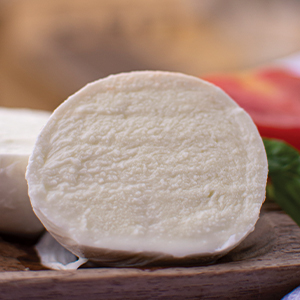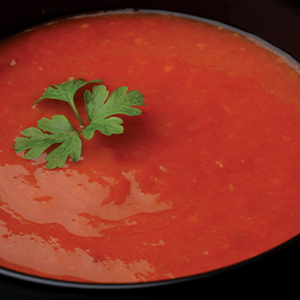Writer: Mary Jane Miller
It’s summer in Iowa and our farmers markets and gardens are bursting with tomatoes. Every flat surface in my kitchen is loaded with ripe tomatoes from my own garden. The price and the quality of those boxes at the Saturday market are hard to resist, but how many BLTs can one family eat? A lot, to be sure, but there are other ways to make the most of the season and preserve its sunshine for the long, cold winter.
 Eat them now, with homemade mozzarella
Eat them now, with homemade mozzarella
Fresh mozzarella cheese made from raw local milk makes a world-class Caprese salad with nothing more than sliced tomatoes, salt, pepper, a drizzle of olive oil and a scattering of fresh basil. Pair it with crusty bread on the side for a satisfying lunch.
Last summer, it became legal in Iowa for consumers to buy raw cow’s milk directly from farmers. The new law requires farmers to stick to a strict schedule of testing both their herds and their milk to ensure they’re safe.
The website GetRawMilk.com lists the Iowa farms that sell raw milk, either through weekly subscriptions or occasional pick-ups. For me, I’m less interested in the milk itself than the mozzarella I can make with it. It’s fun and easy to do — in less than an hour — with common equipment you probably already have at home.
You can buy rennet tablets and citric acid at your neighborhood grocery store. You can use whole milk from the grocery store, too, but it makes the cheese a little bouncier, without the creamy richness of cheese made from farm milk. Since most grocery store milk is 3.25% dairy fat, far less than farm milk, you should replace a cup of it with heavy cream.
And remember: If you make your own mozzarella, make sure to try a bite before you chill it. There’s nothing like it. (See recipe at bottom.)
Eat them later, from a jar
Why bother canning tomatoes? You can easily buy them. Commercially processed tomatoes are canned with calcium chloride, which helps them keep their shape. That makes sense if you’re trying to sell lovely firm tomatoes.
But if you’re trying to make a silky-smooth soup or sauce, those firm tomatoes are never going to fall apart when you cook them. If you’ve never canned before, fear not: Tomatoes are among the easiest things to can, and they’re definitely worth spending an afternoon in the kitchen, especially if you enlist a friend or two. Your future self will thank you with fantastic spaghetti sauce and chili. I’ve canned salsa and spaghetti sauce, too, but I find that plain canned tomatoes are more versatile, earning their keep on my pantry shelves. (See recipe at bottom.)
 Three ideas for home canned tomatoes
Three ideas for home canned tomatoes
1. For decadent cream of tomato soup, sauté a 1/2 cup of chopped onion and a minced garlic clove in a couple of tablespoons of butter until soft. Stir in 3 tablespoons of flour until creamy. Add 1 cup of half-and-half or milk and cook, stirring until it’s thick. Add a quart of tomatoes and blend with an immersion blender until smooth. Heat it just until hot and season with salt and pepper to taste. (For bonus points: Top it with a spoonful of that frozen pesto you made while you were canning those tomatoes.)
2. For fresh-tasting salsa in the dead of winter, dump a quart of tomatoes into a strainer, set over a bowl to catch the juice. Drink the juice. Tip the tomatoes into a blender or food processor and add one fresh jalapeno, 1/2 cup of cilantro, juice from half a lime, 1/2 cup of coarsely chopped onion, a smashed garlic clove and salt to taste. Blitz it a few times and you’re done.
3. For what my mom called “cheap spaghetti,” which we loved, cook a 1/2 pound of spaghetti as the package directs. While it boils, cook two strips of chopped bacon with 1 tablespoon of olive oil in a skillet until crisp. Use your hands to squish a quart of tomatoes into the skillet. Cook to reduce the juices a bit. Dip out a cup of the pasta water, and add about half of it to the skillet. Drain the pasta and toss it in the skillet to coat. Add a little more pasta water if it needs it. Season and serve with parmesan cheese. A dollop of fresh pesto on top is a nice addition here, too.
Fresh Mozzarella
Ingredients
2 tablets rennet (the Junket brand works well)
1 cup water, divided in halves
1 1/2 teaspoons citric acid
1 gallon whole milk (raw or pasteurized but NOT ultra-pasteurized because it won’t firm up). For added richness, replace 1 cup of pasteurized whole milk with 1 cup of heavy cream.
Kosher or sea salt
Directions
1. Crumble the tablets of rennet in a small bowl, then add a 1/2 cup of water and stir to dissolve. In another small bowl, mix the citric acid and the remaining 1/2 cup of water.
2. Pour the milk into a large pot and stir in the citric acid mixture. Heat over medium heat, stirring, until it reaches 90 degrees Fahrenheit. Then remove it from heat.
3. Add the rennet and stir slowly to mix well. Cover and set aside. After about 30 minutes, it should have the consistency of thick yogurt. Press it with your finger to check. You’ll want to be able to slice through it. If it’s not set, let it rest another 10 minutes or so.
4. Use a long knife or spatula to cut the curds in a grid pattern, all the way to the bottom of the pot.
5. Heat the curds over medium heat, stirring very slowly. Try not to break up the curds too much. Heat to 106 F.
6. Remove from heat and continue to stir slowly for another 5 minutes. The curds will separate from the whey.
7. Line a large colander with cheesecloth, muslin, or a flour sack dish towel and set over a bowl to catch the whey. Scoop the curds into the colander and allow the cheese to drain for about 5 minutes.
8. In a small pot, heat about 3 cups of the reserved whey to 170 degrees. Remove from heat.
9. Slip on a pair of rubber gloves to protect your hands. (Use gloves that don’t have a texture, or turn them inside out, to make the cheese smooth and pretty.) Work over the pot to scoop up a third of the curds and form them into a ball. Lower the ball into the hot whey, and let it sit for a few minutes. Use a large spoon to press the ball against the side of the pot until it holds together. The cheese will get soft and stretchy. Lift out the ball, flatten it slightly and generously salt it. Stretch and fold the curds onto themselves until they’re shiny and firm. Shape them into a ball. If at any time it gets hard to shape, dip it into the hot whey for a minute. Repeat with remaining curds.
10. Store in a container covered with cold whey, and refrigerate it for up to a week.
Cold Pack Canned Tomatoes
If you pick your own tomatoes, remove the stems as you go so they don’t poke holes in their friends in the box.
Ingredients
Citric acid or lemon juice
Salt
Fresh tomatoes
Directions
1. Wash canning jars in hot soapy water or the dishwasher.
2. Elevate a canning rack in a canner or large stock pot. (Instead of a canning rack, you can use canning lid rims or a couple of folded dish towels, just so the jars don’t touch the bottom of the pot.) Fill the pot half full of hot water, and start heating it while you prepare the tomatoes.
3. Bring another large stock pot of water to a boil.
4. Fill one side of the sink or a large bowl half full of cold water. Add a big scoop of ice.
5. Remove any remaining stems from the tomatoes. To make peeling easier, use a sharp knife to cut a small “x” on the bottom of each tomato.
6. Drop the tomatoes into boiling water for about 60 seconds or until their skins crack or slip away easily. Use a large skimmer to lift tomatoes out of the boiling water and into the ice water. I keep a smaller bowl handy to catch drips. Replace the ice as it melts.
7. Add 1/2 teaspoon citric acid to each quart jar, or 1/4 teaspoon per pint jar. (Alternatively, you can use 2 tablespoons of lemon juice per quart or 1 tablespoon per pint, but I prefer citric acid because it doesn’t alter the flavor.) Add 1 teaspoon salt per quart or 1/2 teaspoon per pint.
8. With a small sharp knife, strip away the tomato skins and cut out the cores. (A tomato corer really helps here.) Push the tomatoes into clean jars, cutting in half if needed. Press down to pack tightly and to release juices. Leave a 1/2 inch of space at the top of each jar. Remove air bubbles by running a plastic knife around the inside of each jar. Wipe the rims with a clean paper towel. Top with canning lid and screw on bands until finger tight. (Older recipes suggest heating the lids in simmering water, but that’s unnecessary.)
9. Place prepared jars in the canner. Use rack to lower jars into hot water. Add enough boiling water to cover jars by an inch. Cover the pot and bring it to a full boil, then reduce heat to a gentle boil for 45 minutes.
10. Elevate the rack. Place each jar on a towel on the counter to cool. You’ll hear the lid “ping” as each jar seals. After the jars are completely cool, check the seal by pressing the center of each lid. If it doesn’t flex, you can wipe off the jars, label them and store them in a cool, dark place. If any jars fail to seal, refrigerate them and eat the tomatoes within a week.
Tomatoes at Terrace Hill
If you’re up to your elbows in tomatoes and need a little inspiration, sign up for the annual Terrace Hill Tomato Dinner on Sept. 5. Chef Tag Grandgeorge will serve a five-course meal with tomatoes in each dish, even dessert. For details and tickets, visit terracehill.iowa.gov.












